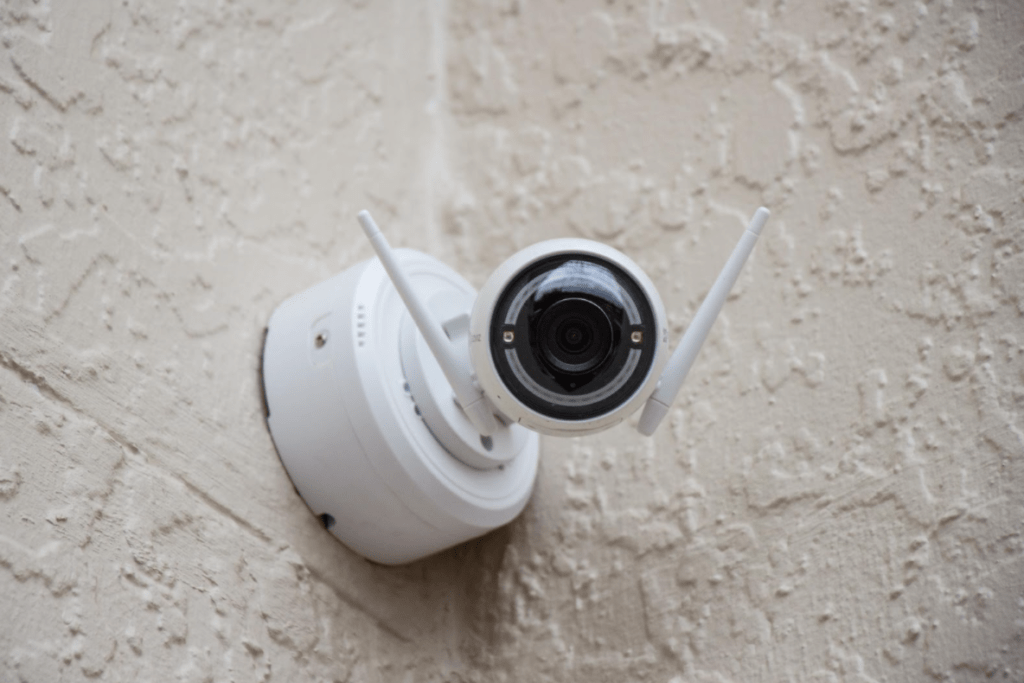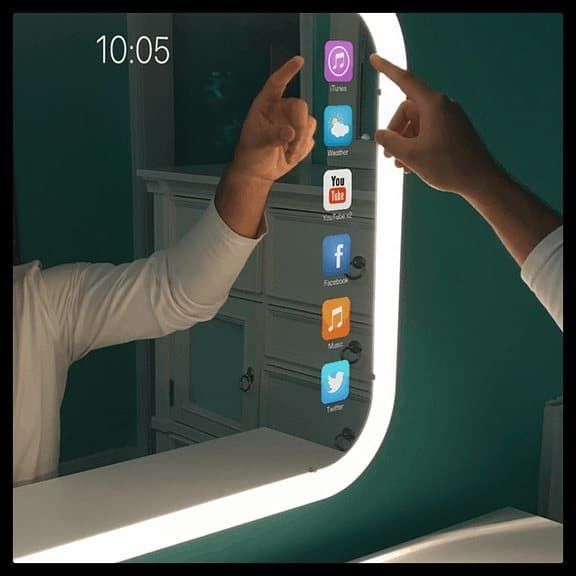Having a smart home means different things to different people, but one thing it always means is more peace of mind and a more streamlined lifestyle. The ability to have access to your home’s security system from your mobile phone or tablet means that you never have to worry about forgetting to lock the garage or front door again. Having a smart speaker that can dim the lights for you means that you can switch off the bedroom light without getting out of bed. Smart appliances mean that your refrigerator can tell you if you’re low on yogurt. With the wonders that technology has given us in the way of automation and mobile app options, getting smart home technology installed is really just the logical next step.
Still, what is a smart home, and what types of smart home technology are right for your specific needs? Do you need a smart thermostat, or would your money be better spent on smart lights? How does your Amazon Alexa or Google assistant figure into the mix? This article is here to explain everything you ever wanted to know about home automation systems, the Internet of Things (IoT), and much more.
What is the Internet of Things?
We all know what the internet is—it’s the intricate web that connects people around the world from morning till night and beyond. We use the internet every time we respond to an email notification or look up a recommendation for a restaurant. That said, we usually think about the internet as something that we use. That is to say, the internet is dependent on us accessing it in order to work at all.
The Internet of Things (usually shortened to IoT) takes things to the next level. Smart devices aren’t smart like humans, but they are able to do things automatically and to learn our patterns and needs. In other words, the IoT is made up of another network, one made up of smart devices that communicate with one another over a wireless network, independent of humans. For example, a homeowner with smart blinds in their living room won’t need to open the blinds in the morning. Instead, that homeowner’s living room shades will know that they wake up around 7:00 a.m. and do it for them, automatically. Or, alternatively, a sensor could alert those shades to the fact that the homeowner has entered the living room, which will then cause them to open. The same theory works for all kinds of smart home systems—door locks that lock on their own at bedtime, thermostats that adjust your home’s temperature according to your preferences, and smart TVs that know how to respond to voice commands.
The Best Smart Security Systems

Different people have different needs, but one smart home product that many people are interested in is a smart security system. Have you ever headed to work and been plagued by the question of whether you did lock the door and activate the alarm? No longer. With a smart home security system, you can control the lock on the front door or garage door with a smartphone app. Plus, many home security systems have sensors that can detect break-ins and alert you immediately. Don’t worry, though, these smart security systems are designed to ignore your furry family members when detecting burglars. This kind of automation is especially helpful for older adults who might forget to lock the door or activate the alarm (or have trouble with complicated keypads and other older technology). It also takes the weight off the shoulders of caregivers for older adults across the U.S. With home automation and security systems set up, caregivers can rest easy and know that the older adults in the home are safe and sound.
In addition to smart door locks, these home security systems usually also include video doorbells (allowing a homeowner to see who’s requesting access to their home environment) and the ability to provide remote access in case you forgot that a tenant or family member is coming by and don’t want the alarm system to be triggered. Window sensors and smart locks make sure that windows are secure. Plus, these gadgets can even call the fire department if their sensors detect a fire when you’re not in your own home to do so, and they can call a hospital if older adults (or any other family members) are injured and alone in their home alone. How’s that for a smart appliance?
According to PC Magazine, the best smart home security systems included SimpliSafe, which they loved for ease of installation and versatility, ADT Home, which they say is state-of-the-art (but comes with a hefty price tag), and Vivint Smart Home, which offers 24/7 monitoring of your entire home environment.
The Best Smart Thermostats

Another popular smart device that many people incorporate into their smart house is a thermostat that makes the temperature of your home constantly perfect. If you’ve ever disagreed with a family member about how high to turn up the air conditioning or the heater, you need to think about smart thermostats. Not only do these smart devices allow you to control your heater and air conditioning system from a smartphone app, but they also use the wonders of artificial intelligence and machine learning to program your home’s temperature for you. That’s right—smart thermostats know your schedule and will turn down your heater when you’re at work. This is hands down the best way to lower your electric bill. After all, why should you be paying for the heater when the living room lacks occupancy?
If you’re wondering how to decide between different devices, worry no longer. Wirecutter did the work for you and found that the best smart thermostat of 2021 is the Nest thermostat, brought to you as part of the Google home system. Just like your Google smart assistant responds to voice controls when you want her to play music from a specific playlist (another great, fun feature of a smart Google home), your Google Nest thermostat will listen and respond when you ask to turn down the heater. That said, you probably won’t need those voice controls, since the sensors on the smart thermostats by Nest (and runner up Ecobee, which is connecting to the Amazon Alexa) will be able to learn your behaviors and heat or cool your home accordingly. That’s what home automation is all about.
Smart Lights You Need (and Want)

Once upon a time, in a time before smart homes and smart lights, people used to put timers on their lights when they went on vacation to fool burglars. Or maybe they’d just leave the porch light on for the whole week. Neither of these solutions is ideal, of course. First of all, in the real world, burglars can tell when you’re away—even if the porch light is on. Second of all, that kind of tactic makes for very expensive electric bills. Why should you be paying a huge electric bill for a house that doesn’t even have any occupancy? You shouldn’t.
Having smart lights in your own home means that you have lighting control literally at your fingertips, even if you’re away for the week. That means that you never come home to a dark house again, but without having to pay to keep the porch or living room light on all week. Plus, smart lights work with Google Assistant, Amazon Alexa, and other smart home hubs. Some of these smart home devices also allow a homeowner to determine the warmth of their bulbs, so you can make the room warmer or brighter by using a smartphone app or voice control as well. Forget about light switches and clapping lamps—now you just have to ask Alexa to dim the lights at bedtime.
According to a recent report from CNET, Wyze smart bulbs are the best on the market, with Philips Hue LED bulbs coming in second. Whatever bulbs you go for, smart lights are definitely worth investing in as an addition to your home automation systems.
Smart home automation technology is an exciting field of innovation, and there are plenty of appliances and accessories out there that would be a fun addition to your own home. That said, while adding home automation elements like an automatic coffee maker, dishwasher, or water heater may be fun, the smart homeowner will start by asking a technician to install the above elements. Make sure that your home automation elements are all compatible devices with Alexa, Google Assistant, or any other Wi-Fi-based technology you already use. Also, make sure that the smart-home devices work with either an Android app or a Mac iOS, whatever you use. Then you’ll be ready to go shopping for doorbell cameras, smart locks, and motion sensors that help you keep tabs on the security, warmth, and lighting control of your home. With the right home network, you’ll make the phrase “there’s no place like home” take on a whole new, technologically advanced meaning.




